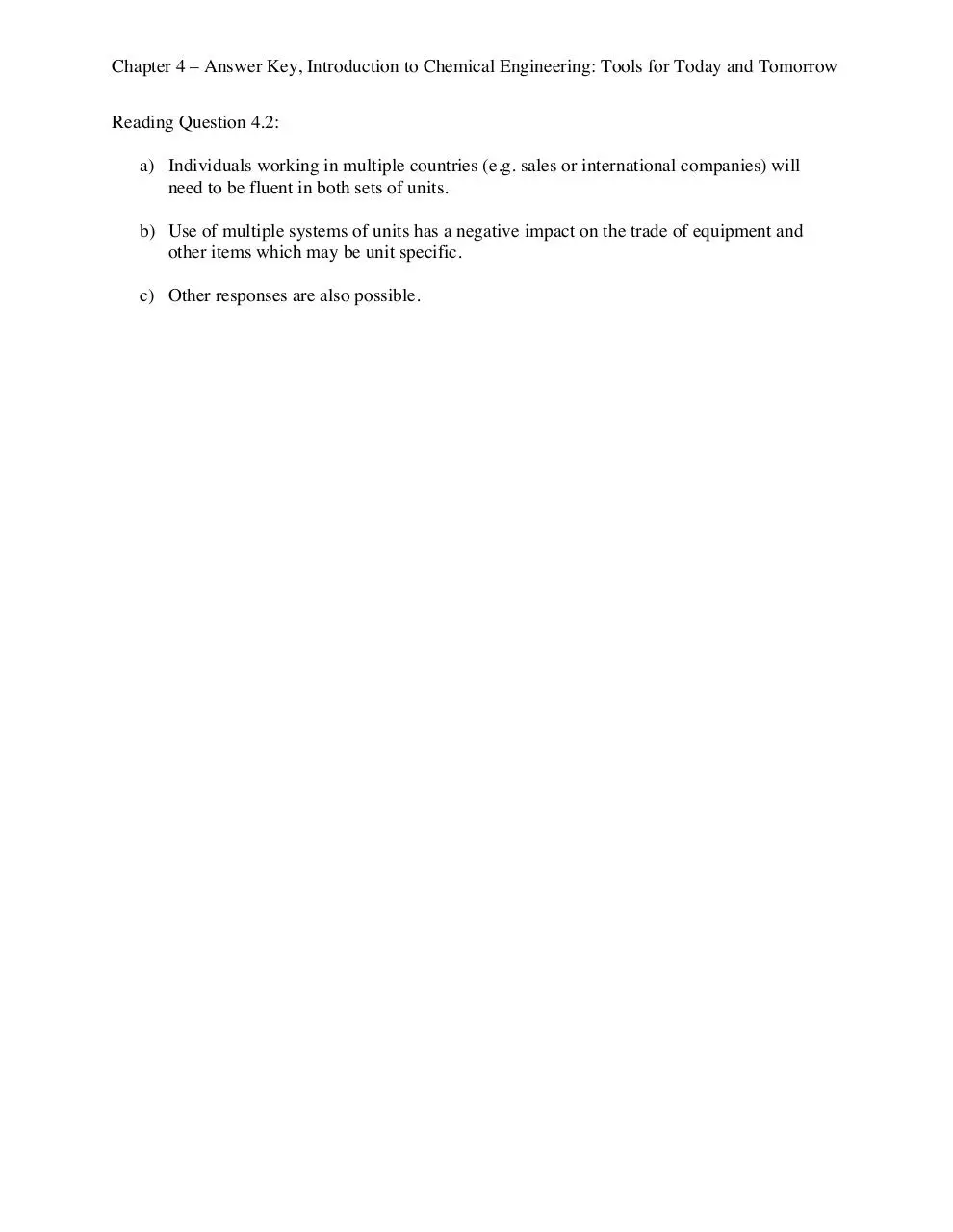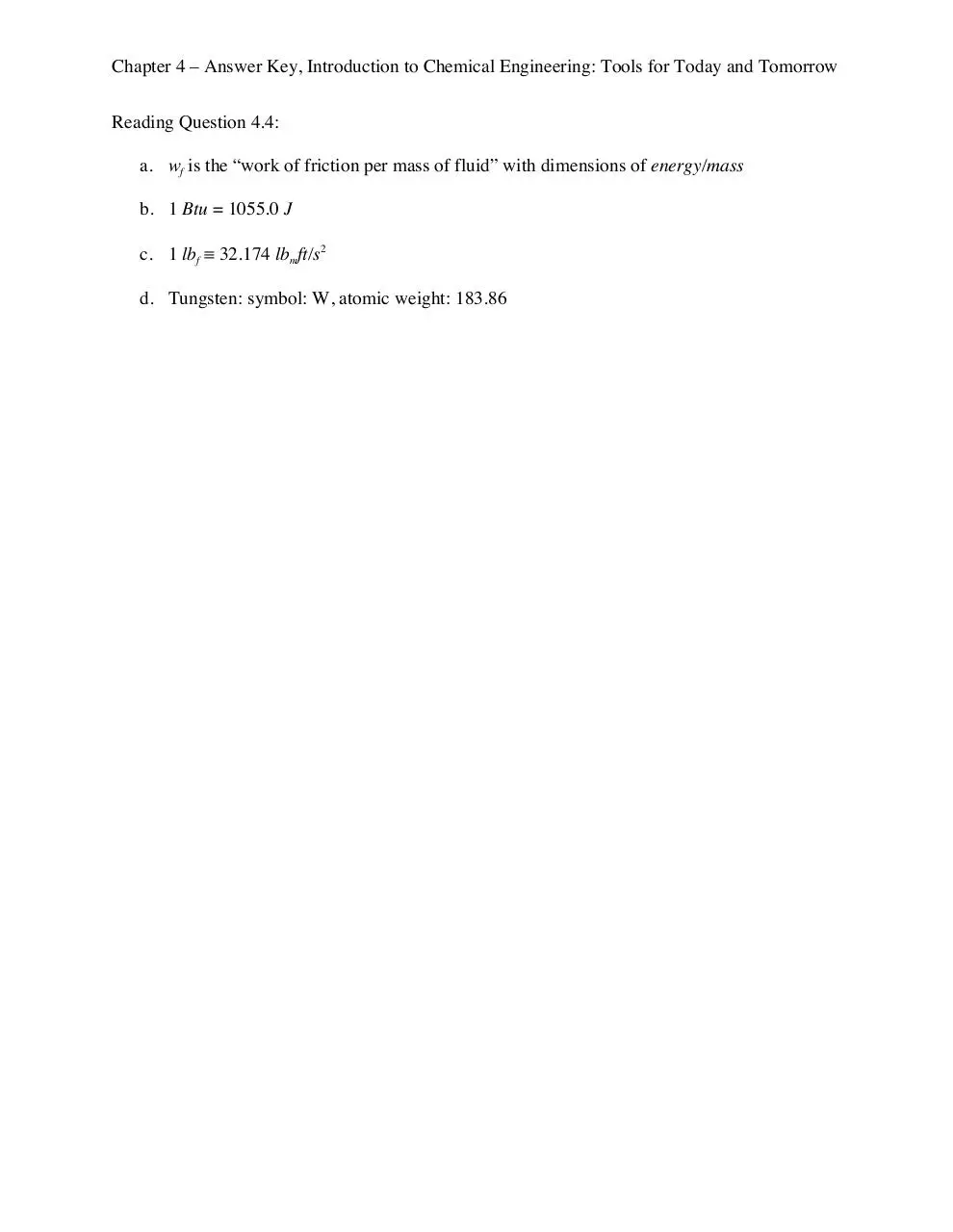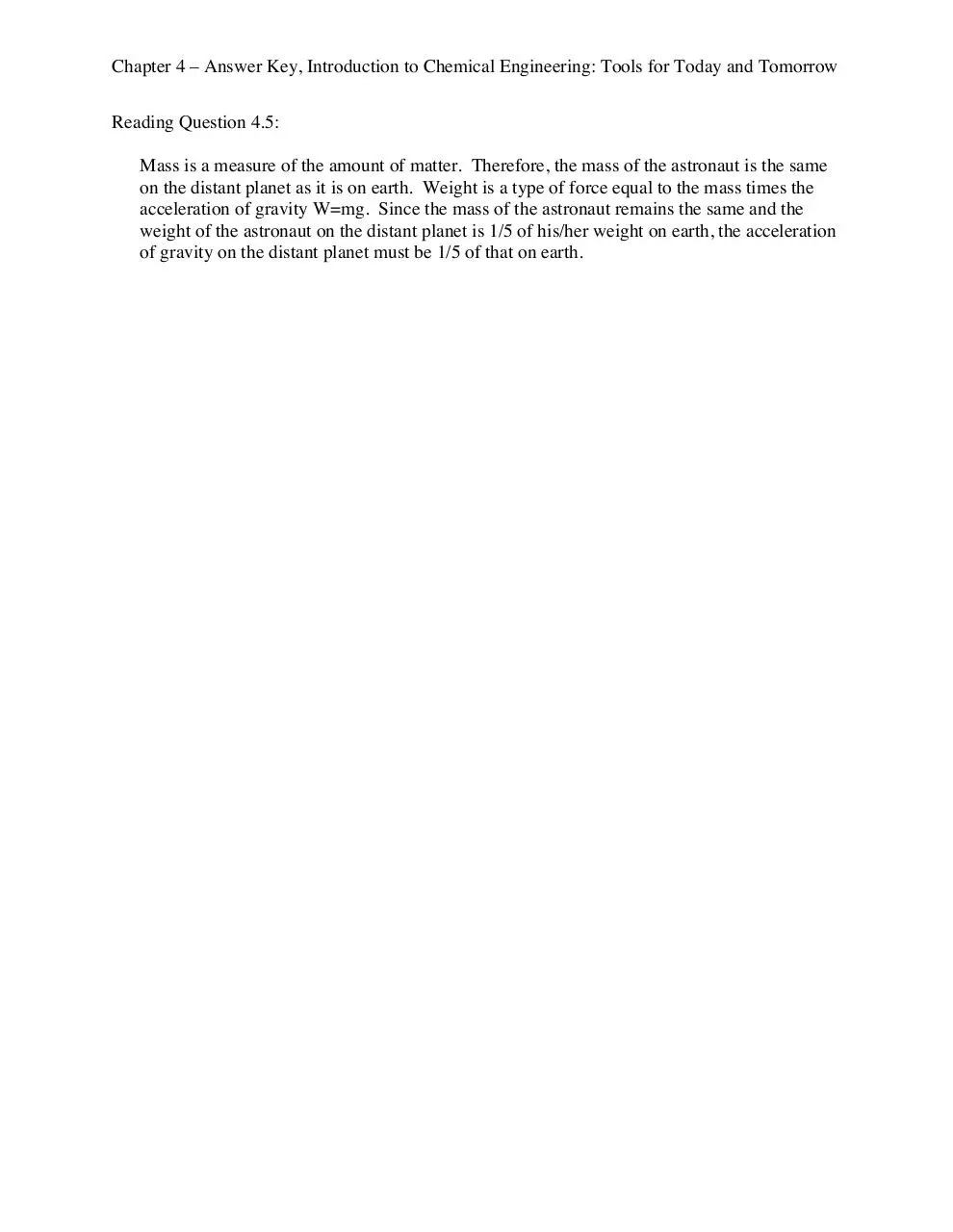introduction to chemical engineering ch (4) (PDF)
File information
Title: Chapter 4
Author: Ken Solen
This PDF 1.3 document has been generated by Microsoft Word / Mac OS X 10.6.4 Quartz PDFContext, and has been sent on pdf-archive.com on 21/02/2017 at 17:30, from IP address 47.197.x.x.
The current document download page has been viewed 6010 times.
File size: 675.75 KB (22 pages).
Privacy: public file





File preview
Chapter 4 – Answer Key, Introduction to Chemical Engineering: Tools for Today and Tomorrow
Reading Question 4.1:
Numerical value: 94,000
Basic dimensions: length is explicitly represented. The derived unit of force also includes
the basic dimensions of mass, time, and length.
Base units: kg, m, s
Derived units: Newton (N) which is used to describe force
Chapter 4 – Answer Key, Introduction to Chemical Engineering: Tools for Today and Tomorrow
Reading Question 4.2:
a) Individuals working in multiple countries (e.g. sales or international companies) will
need to be fluent in both sets of units.
b) Use of multiple systems of units has a negative impact on the trade of equipment and
other items which may be unit specific.
c) Other responses are also possible.
Chapter 4 – Answer Key, Introduction to Chemical Engineering: Tools for Today and Tomorrow
Reading Question 4.3:
3.2 cm is equal to 0.032 meters.
Chapter 4 – Answer Key, Introduction to Chemical Engineering: Tools for Today and Tomorrow
Reading Question 4.4:
a. wf is the “work of friction per mass of fluid” with dimensions of energy/mass
b. 1 Btu = 1055.0 J
c. 1 lbf ≡ 32.174 lbmft/s2
d. Tungsten: symbol: W, atomic weight: 183.86
Chapter 4 – Answer Key, Introduction to Chemical Engineering: Tools for Today and Tomorrow
Reading Question 4.5:
Mass is a measure of the amount of matter. Therefore, the mass of the astronaut is the same
on the distant planet as it is on earth. Weight is a type of force equal to the mass times the
acceleration of gravity W=mg. Since the mass of the astronaut remains the same and the
weight of the astronaut on the distant planet is 1/5 of his/her weight on earth, the acceleration
of gravity on the distant planet must be 1/5 of that on earth.
Chapter 4 – Answer Key, Introduction to Chemical Engineering: Tools for Today and Tomorrow
Reading Question 4.6:
It appears that your colleague used the inverse of the correct conversion factor as follows:
The correct answer is:
Chapter 4 – Answer Key, Introduction to Chemical Engineering: Tools for Today and Tomorrow
Reading Question 4.7:
As shown on p. 50 of the text, ρΗ2Ο = 1000 kg/m3 and ρair = 1.2 kg/m3. The ratio of the two is
approximately 1000.
Chapter 4 – Answer Key, Introduction to Chemical Engineering: Tools for Today and Tomorrow
Reading Question 4.8:
The one with the lower molecular weight.
Chapter 4 – Answer Key, Introduction to Chemical Engineering: Tools for Today and Tomorrow
Reading Question 4.9:
The one with the low density.
Download introduction to chemical engineering ch (4)
introduction to chemical engineering ch (4).pdf (PDF, 675.75 KB)
Download PDF
Share this file on social networks
Link to this page
Permanent link
Use the permanent link to the download page to share your document on Facebook, Twitter, LinkedIn, or directly with a contact by e-Mail, Messenger, Whatsapp, Line..
Short link
Use the short link to share your document on Twitter or by text message (SMS)
HTML Code
Copy the following HTML code to share your document on a Website or Blog
QR Code to this page

This file has been shared publicly by a user of PDF Archive.
Document ID: 0000558104.